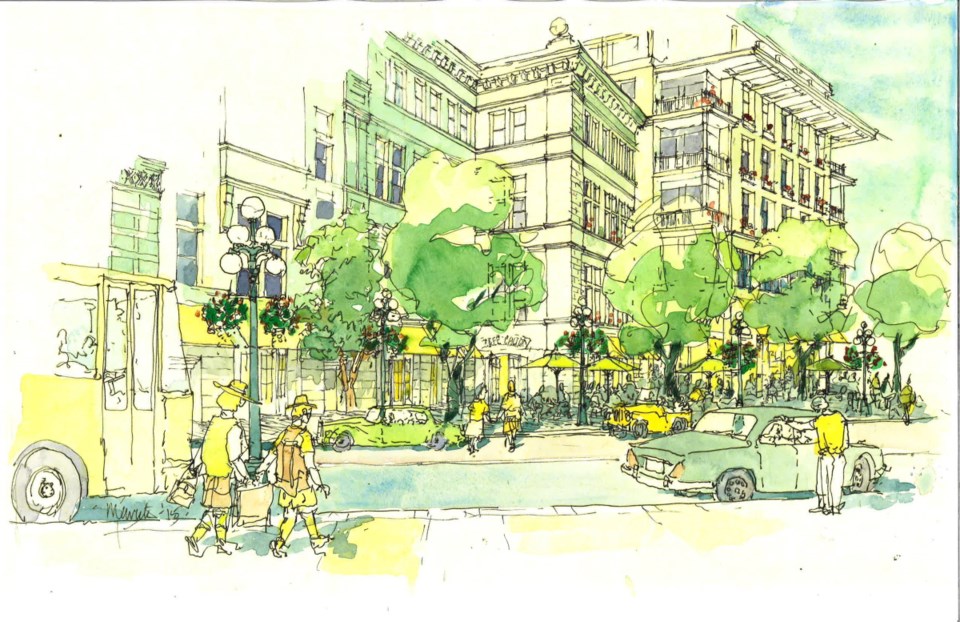A new entrance to the downtown core and a part of the frame of Victoria’s Inner Harbour could start coming out of the ground early in 2016.
Victoria city council has approved developer Stan Sipos’s $40-million redevelopment of the corner of Government and Wharf streets.
The project, which is to start with demolition work before the end of this year, will replace the Canada Customs building at 816 Government St. The adjoining heritage building that faces Wharf Street will be gutted and renovated for mixed-use development.
The seven-storey project will have 56,000 square feet of office space, 43 residential rental units and 14,000 square feet of retail space, wrapping around the block on the ground floor.
“This is huge,” Victoria Mayor Lisa Helps said. “It sends such a strong signal about the future of our downtown, the future of our Inner Harbour and the future of Government Street.”
Helps said the development, which could be completed late in 2017, will be “the best of what Victoria can offer in the 21st century” as it brings together downtown office space, residential units and a retail component that will bring people downtown and help revitalize Government Street.
“This will absolutely galvanize investment and reinvestment up and down Government Street, and I feel really excited about that,” she said.
Sipos said the development will bring 350 to 400 office workers back downtown, add more than 40 residents to the mix and pull in shoppers with new up-market stores.
The two buildings involved in the project have been empty for years after the federal government and small retailers moved on. That contributed to the appearance of Government Street as dead quiet at certain times of the year.
That should change when it’s finished, Sipos said.
“I think this is for the benefit of the whole,” he said. “It was an excellent and exciting decision for what can be in the downtown core and I hope we can live up to the expectation that’s on our shoulders — it’s a big load and I hope I’m up to the task of doing the job expected of me.”
For his part, Sipos is confident the building will surpass expectations. “It’s a huge project, and such a sensitive site and it’s an important site for all of us, getting it right was not easy,” he said. “I think we have come up with a development that will complement Old Town and will create that sense of vibrancy and bring a freshness to the area.”
The first job is to secure construction financing, which will allow Sipos to set a schedule for demolition.
He has already been in contact with prospective tenants for the office and commercial space, but neither he nor the parties had been able to commit before council approved the project.
There wasn’t much opposition to the development plans, though some had objected to its height and some of its design elements.
Helps said she understood the concerns some had about losing the look or feel of Old Town, but she argued while that heritage charm is part of Victoria’s fabric, it’s people that enliven a space.
“This development is part of the harbour — a complement to the Empress [Hotel] and the parliament buildings — and it’s an anchor to downtown,” she said. “We do need to preserve heritage, as it is part of what makes Victoria special, but if we want Victoria to continue to be special into the 21st century, we need people living and working downtown.
“So a sensitive redevelopment with a little bit of extra heights? I’m OK with that.”



